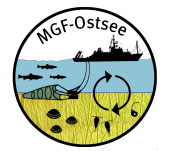Excerpt from the regulation on the designation of the "Fehmarnbelt" marine protected area (NSGFmbV)
§ 2 Object of protection
(1) The MPA "Fehmarnbelt" has an area of 280 square kilometers and is located in the Baltic Sea between the German island Fehmarn and the Danish island Lolland. It comprises a channel that is cut into the much shallower surrounding sea bed north of Fehmarn.
§ 3 Protective purpose
(1) The protection of the area as a MPA serves to achieve the conservation objectives of the Natura 2000 area by permanently preserving the area, the diversity of its habitats, biotic communities and species relevant for this area as well as the special character of the sandbank (megaripples).
(2)The protection referred to in paragraph 1 shall include the conservation or, where necessary, the restoration of the specific ecological values and functions of the site, in particular
1. its characteristic morphodynamics as well as the hydrodynamics shaped by the water exchange between the North Sea and the Baltic Sea,
2. a natural or semi-natural expression of the marine macrophyte populations and the species-rich gravel, coarse sand and schill beds
3. the populations of harbour porpoises, harbour seals including their habitats and natural population dynamics, and
4. its connecting and stepping stone function for the ecosystems of the western and central Baltic Sea
(3) The protective purposes pursued in the nature reserve include the maintenance or, where necessary, the restoration of a favourable conservation status
1. of the habitat types defining the area, as defined in Annex I to Directive 92/43/EEC Sandbanks with only weak permanent submergence by seawater (EU code 1110) and reefs (EU code 1170)
2. the species listed in Annex II to Directive 92/43/EEC Porpoise (Phocoena phocoena, EU code 1351) and common seal (Phoca vitulina, EU code 1365).
(4) The protection of the habitat types referred to in paragraph 3(1), including their characteristic species, shall require in particular the conservation or, where necessary, restoration
1. the ecological quality of the habitat structures and the extent of their area
2. the natural quality of these habitats with largely natural distribution, population density and dynamics of populations of the characteristic species and the natural expression of their communities
3. the undissection of habitats and their function as regeneration areas, especially for the benthic fauna, and
4. its function as a starting point and dispersal corridor for the recolonization of surrounding areas by benthic species and communities.
(5) The protection of the species referred to in paragraph 3(2) requires in particular the conservation or, where necessary, restoration
1. the natural population densities of these species with the aim of achieving a favourable conservation status, their natural spatial and temporal distribution, health status and reproductive fitness, taking into account natural population dynamics, natural genetic diversity within the stand and genetic exchanges with stands outside the area
2. the area as a feeding and migration habitat for harbour porpoises and seals, which is as undisturbed as possible and largely unaffected by local pollution, and as a reproduction and breeding habitat for harbour porpoises,
3. undissected habitats and the possibility of migration of harbour porpoises and harbour seals within the Baltic Sea, in particular to the adjacent and neighbouring nature reserves of Schleswig-Holstein and Mecklenburg-Vorpommern and to the moorings along the Danish (in particular Rødsand) and German coasts; and
4. the essential nutritional requirements of harbour porpoises and harbour seals, in particular the natural population densities, age class distributions and distribution patterns of the organisms serving as food sources for harbour porpoises and harbour seals
Source: https://www.gesetze-im-internet.de/nsgfmbv/BJNR340500017.html

